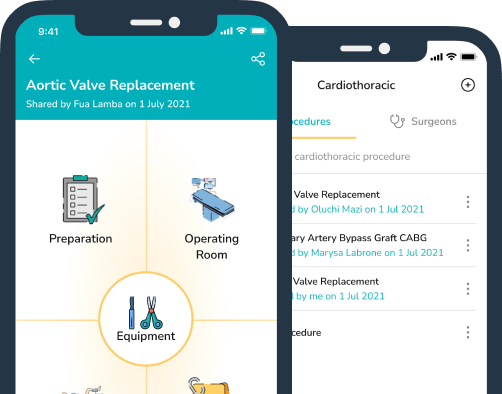Why Interruptions in the Operating Room Put Safety, Efficiency, and Staff Wellbeing at Risk
Posted at 26 September 2025 in Healthcare Leadership,Operating Room Workflow,Patient Safety,Perioperative Nursing,Staff Wellbeing by Marrianne
The Hidden Cost of Interruptions in the OR: Why Focus Matters
Imagine this: mid-operation, a circulator is executing the instrument count and prepping for the next step. Suddenly, someone enters asking a question unrelated to the task. A phone rings. A colleague requests “just one small check” that could wait. In that instant, the smooth flow fractures, attention shifts, and the risk for error rises.
Operating rooms are high-stakes environments. Interruptions, distractions, and disruptions (DIDs) occur frequently. Research shows these DIDs are linked to slower operative times, degraded team performance, errors, and staff burnout【see references】.
Evidence: How Interruptions Affect Workflow
-
A meta-analysis of 27 studies found that interruptions accounted for about 22% of total operative time.
-
Observations show surgical teams complete 64 tasks per hour, nearly half involving communication — many of which are interruptions.
-
In 1,015 surgeries observed, there were 697 interruptions during surgical counts, averaging 8.7 interruptions per hour.
-
Noise and distractions contribute to burnout and emotional exhaustion among OR nurses.
Why These Disruptions Matter
Interruptions in the operating room:
-
Increase task switching costs and cognitive load.
-
Erode team coordination and communication.
-
Lead to errors in counts, instruments, and protocols.
-
Raise stress, fatigue, and burnout risk.
Downstream Risks
| Domain | Impact |
|---|---|
| Time & Efficiency | Slower turnovers, lost OR capacity |
| Errors & Safety | Incorrect counts, protocol breaches, retained items |
| Patient Outcomes | Higher complication risk, reduced safety |
| Staff Wellbeing | Burnout, fatigue, turnover |
| Team Dynamics | Miscommunication, conflict, mistrust |
Global Professional Standards on Disruptions & Surgical Counts
Leading perioperative associations across the world are clear: minimise interruptions and protect focus during critical workflows like surgical counts.
-
AORN (USA) – Guidelines for Perioperative Practice emphasise that surgical counts should occur in a distraction-free environment, with interruptions minimised.
-
ACORN (Australia) – Standards for Perioperative Nursing in Australia state that all team members must respect the surgical count process, with policies to reduce non-clinical disruptions and noise.
-
ORNAC (Canada) – Standards, Guidelines, and Position Statements highlight that accuracy in counts depends on staff focus, and interruptions jeopardise patient safety.
-
AST (USA) – Standards of Practice for Surgical Technology require that a “no-disruption zone” be established during counts, ensuring clear focus and communication.
-
AfPP (UK) – Standards & Guidance for Perioperative Practice mandate that surgical counts are conducted in an environment free of unnecessary distractions.
Across these global guidelines, the message is consistent: Interruptions increase the risk of errors, delay workflow, and compromise patient safety.
Standards Exist for a Reason — But Why Aren’t They Always Respected?
Every major perioperative association — AORN, ACORN, ORNAC, AST, AfPP — has clearly written standards to protect surgical counts and minimise disruptions. These are not optional. They are evidence-based frameworks designed to:
-
Prevent retained surgical items.
-
Support team communication and accuracy.
-
Protect staff from unnecessary stress and fatigue.
-
Ensure patients receive safe, high-quality care.
👉 In short, the standards are there to be followed, and supported by all operating room professionals.
So why aren’t they always respected?
-
Cultural norms: Hierarchy or habit can override policy.
-
Time pressure: Case turnover speed may be prioritised over protocol.
-
Resource gaps: Understaffing forces multitasking and shortcuts.
-
Awareness: Staff may not always be trained or reminded.
-
Leadership enforcement: Without strong backing, policies risk becoming “paper standards.”
⚠️ The result? Standards meant to safeguard patients and professionals are diluted by daily realities.
This is why leadership support, accountability, and a culture of patient safety are essential for making standards meaningful.
Strategies to Protect Workflow
-
“No interruption zones” / Sterile cockpit periods
-
Structured communication windows
-
Training in human factors & non-technical skills
-
Role clarity & leadership support
-
Noise and environment control
The Financial Cost of Interruptions
Interruptions in the operating room aren’t just a human factor issue — they carry real financial consequences for hospitals.
-
Every minute in the OR is expensive.
-
In the U.S., the average cost of OR time ranges from $36 to $100 per minute, depending on procedure and facility type (Macario, 2010; Childers & Maggard-Gibbons, 2018).
-
In Australia and the UK, estimates range from AUD $29–$52 per minute (ACORN, 2023; NHS data).
-
-
Turnover inefficiencies add up.
-
If nearly 1 in 4 minutes of OR time is lost to interruptions or inefficiencies, this could mean thousands of dollars per case in wasted resources.
-
For a hospital performing 10,000 surgeries annually, even a 5-minute delay per case can translate to $1.8–$5 million in annual lost capacity or added costs.
-
-
Knock-on effects:
-
Delays can push surgeries past rostered hours, increasing overtime pay.
-
Prolonged turnover times reduce surgical throughput, limiting revenue opportunities.
-
Staff burnout and turnover from constant disruption create downstream costs in recruitment, onboarding, and agency nurse reliance.
-
👉 Bottom line: Interruptions don’t just affect workflow — they directly erode hospital finances, efficiency, and workforce sustainability. Investing in structured communication, role clarity, and leadership enforcement of standards can save hospitals millions annually, while protecting patients and staff.
Conclusion & Call to Action
Interruptions aren’t minor inconveniences — they directly impact patient safety, staff wellbeing, and hospital efficiency. By adopting structured communication, enforcing no-interrupt periods, and promoting supportive leadership, we can protect workflow and reduce risk.
Will your team commit to one small change this week to minimise OR interruptions?
📚 References
-
McMullan RD et al. Operating room distractions and patient safety. Int J Qual Health Care.
-
Göras C et al. Tasks, multitasking and interruptions in the OR. BMJ Open.
-
BMC Nursing. Interruptions during surgical counts.
-
Zhang Y et al. Noise annoyance & burnout in OR nurses. PLOS One.
-
JAMA Network Open. Nurse burnout and patient safety, satisfaction, and quality of care.
-
Macario A. What does one minute of operating room time cost? J Clin Anesth. 2010;22(4):233–6.
-
Childers CP, Maggard-Gibbons M. Understanding costs of care in the operating room. JAMA Surg. 2018;153(4):e176233.
-
ACORN. Standards for Perioperative Nursing in Australia (2023).
-
NHS Improvement. Reference costs: elective surgery per minute estimates.
-
AORN. Guidelines for Perioperative Practice (2024). Association of periOperative Registered Nurses.
-
ACORN. Standards for Perioperative Nursing in Australia (2023). Australian College of Perioperative Nurses.
-
ORNAC. Standards, Guidelines and Position Statements (12th edition, 2021). Operating Room Nurses Association of Canada.
-
AST. Standards of Practice for Surgical Technology (2022). Association of Surgical Technologists.
-
AfPP. Standards & Guidance for Perioperative Practice (2022). Association for Perioperative Practice, UK.
Recent Articles
✈️From Pilots to Perioperative Practice: Why Organisation and Readiness Save Lives in the OR
28 October 2025
Categories
More articles from Healthcare Leadership,Operating Room Workflow,Patient Safety,Perioperative Nursing,Staff Wellbeing
View AllSurgical Site Infections: Reducing the Burden Through Teamwork and Collaboration
Introduction Surgical Site Infections (SSIs) are among the most common healthcare-associated infections worldwide....
28 August 2025
Read moreJewellery, Piercings & Metal in the Operating Room – The Hidden Burn Risk
Why This Matters Electrosurgical units (ESUs)—both monopolar and bipolar—are essential to modern surgery, bu...
12 August 2025
Read more🚫 Artificial Nails in the Operating Room: More Than a Policy—It’s a Patient Safety Imperative
In perioperative environments, details matter—especially those that impact infection prevention and patient safet...
30 July 2025
Read more


